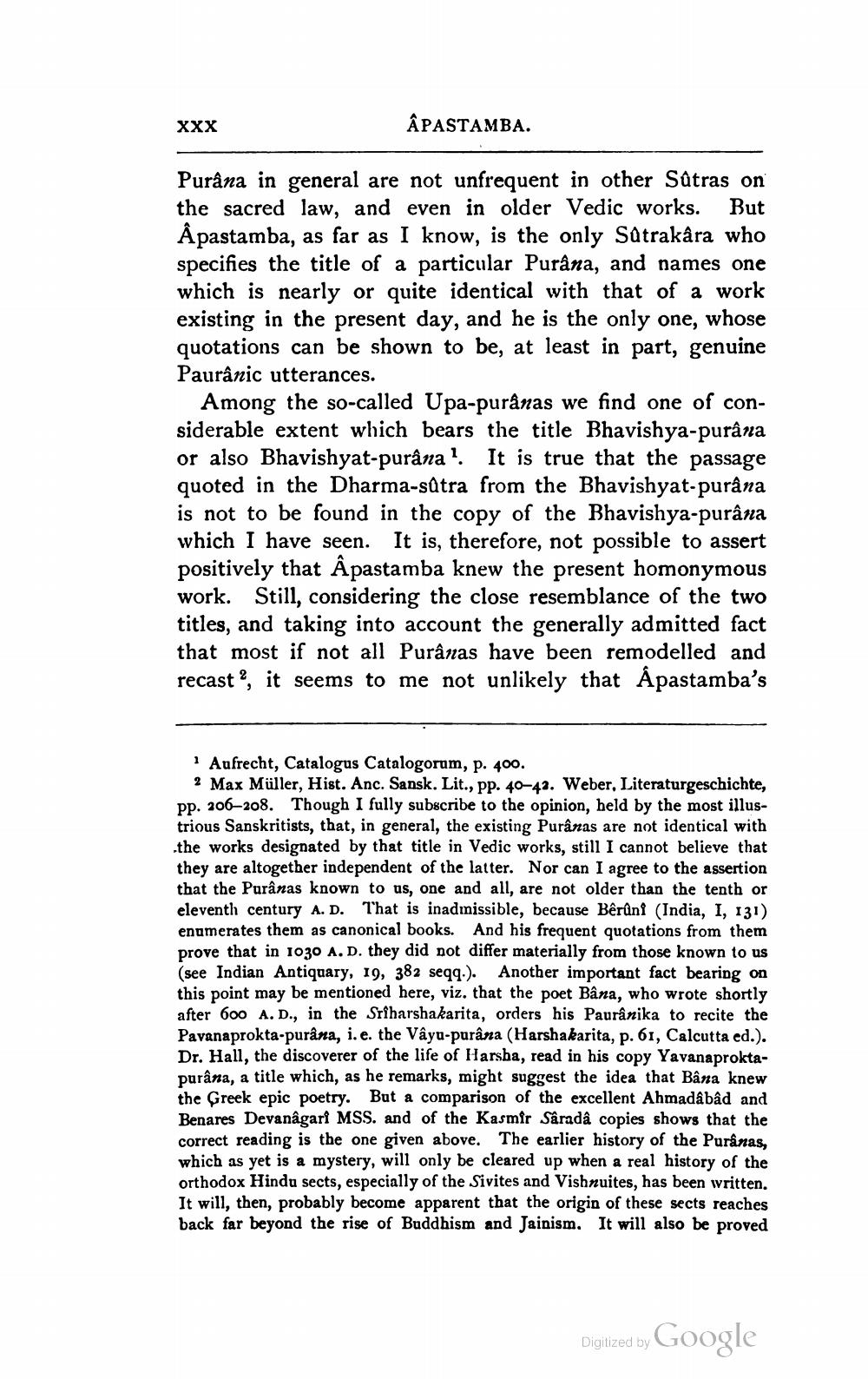________________
XXX
ÂPASTAMBA.
Purâna in general are not unfrequent in other Sûtras on the sacred law, and even in older Vedic works. But Âpastamba, as far as I know, is the only Satrakâra who specifies the title of a particular Purana, and names one which is nearly or quite identical with that of a work existing in the present day, and he is the only one, whose quotations can be shown to be, at least in part, genuine Paurânic utterances.
Among the so-called Upa-puranas we find one of considerable extent which bears the title Bhavishya-purâna or also Bhavishyat-purâna! It is true that the passage quoted in the Dharma-sútra from the Bhavishyat-purâna is not to be found in the copy of the Bhavishya-purâna which I have seen. It is, therefore, not possible to assert positively that Âpastamba knew the present homonymous work. Still, considering the close resemblance of the two titles, and taking into account the generally admitted fact that most if not all Purânas have been remodelled and recast?, it seems to me not unlikely that Apastamba's
· Aufrecht, Catalogus Catalogorum, p. 400.
2 Max Müller, Hist. Anc. Sansk. Lit., pp. 40–43. Weber, Literaturgeschichte, pp. 206,208. Though I fully subscribe to the opinion, held by the most illustrious Sanskritists, that, in general, the existing Puranas are not identical with the works designated by that title in Vedic works, still I cannot believe that they are altogether independent of the latter. Nor can I agree to the assertion that the Puranas known to us, one and all, are not older than the tenth or eleventh century A. D. That is inadmissible, because Bêrûni (India, I, 131) enumerates them as canonical books. And his frequent quotations from them prove that in 1030 A.D. they did not differ materially from those known to us (see Indian Antiquary, 19, 382 seqq.). Another important fact bearing on this point may be mentioned here, viz, that the poet Bâna, who wrote shortly after 600 A.D., in the Sriharshakarita, orders his Paurânika to recite the Pavanaprokta-purâna, i.e. the Vâyo-purâna (Harshakarita, p. 61, Calcutta ed.). Dr. Hall, the discoverer of the life of Harsha, read in his copy Yavanaproktapurâna, a title which, as he remarks, might suggest the idea that Bâna knew the Greek epic poetry. But a comparison of the excellent Ahmadâbâd and Benares Devanagari MSS. and of the Kasmir Sâradâ copies shows that the correct reading is the one given above. The earlier history of the Puranas, which as yet is a mystery, will only be cleared up when a real history of the orthodox Hindu sects, especially of the Sivites and Vishnuites, has been written. It will, then, probably become apparent that the origin of these sects reaches back far beyond the rise of Buddhism and Jainism. It will also be proved
Digitized by Google




